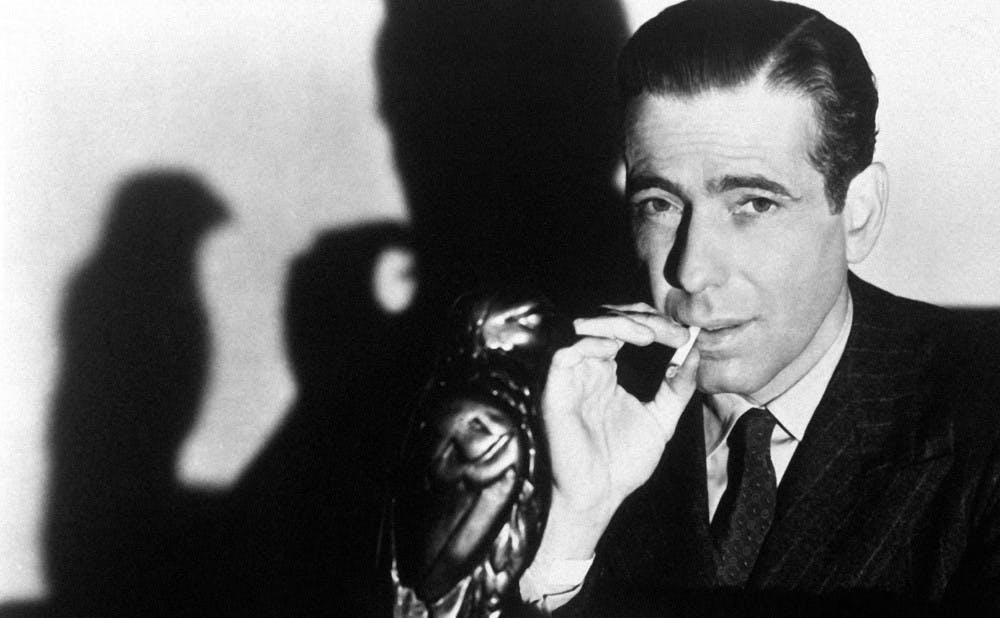The North Carolina Museum of Art is currently hosting “Mad, Bad, and Dangerous to Know,” a weekly film series dedicated to highlighting seminal movies in the film noir genre.
The series, which began last Friday with a showing of Alfred Hitchcock’s 1951 Strangers on a Train, aims to show audiences the complicated male characters prevalent in film noir history. Actors in the films include Humphrey Bogart, Kirk Douglas and Peter Lorre.
“It is surely the combination of plot elements and character construction, on the one hand, in conjunction with a powerfully distinctive style of cinematic representation, on the other,” Michael Morton, who is teaching a course devoted to film noir as Duke research professor in the program of literature, said.
Film noir became popular starting in the 1940s because of its lurid, suspenseful storylines and its hardboiled dialogue that recalled popular novels of the time. Almost entirely shot in black and white, many film noirs continue to influence cinema to this very day.
“I have long been interested in this form, initially simply as a matter of more or less casual interest, but in more recent years, in a more focused manner, as an area of particular concentration within the overall field of film studies," Morton said. "I noticed that there was no course in the University's curriculum devoted specifically to the study of film noir, so I took the opportunity to develop one."
“Mad, Bad, and Dangerous to Know” has also piqued the interest of Duke students, as well. Tera Kashgarian T’15 is excited to visit the retrospective and watch some of the films.
“Watching film noir now—especially in the wake of its appropriation in so many TV tropes—is a really fun exercise in reconciling, as a contemporary viewer, the aesthetically dark stylistics and kind of dire musings on the existential condition of the protagonist, with that certain self-awareness of the genre that at the same time provides a massive cultural reference point for re-imagination, kitsch and trope,” Kashgarian said.
Film noir typically features complex male protagonists, whose flaws provide the major psychological drive of the film and influence the plot in drastic ways. Classic examples include Humphrey Bogart’s bitter detective Sam Spade in John Huston’s 1941 The Maltese Falcon and Kirk Douglas’s corrupt journalist Chuck Tate in Billy Wilder’s 1951 Ace in the Hole.
“The 'flawed protagonist' drives most cultural narratives in his flawedness, from Aristotelian hamartia to something as banal or camp as the requisite stylized personality quirk/punchline in a standard issue romantic comedy," Kashgarian said. "What interests me more is the fundamentally flawed protagonist, whose flaw is deployed on a more existential level and serves only to complicate his condition without any teleology of narrative resolution."
“Absolute must-sees are The Maltese Falcon and The Postman Always Rings Twice," Morton said. "Definitely to be recommended, for a variety of reasons, would also be Strangers on a Train, Ace in the Hole, Gun Crazy and On Dangerous Ground."
“Mad, Bad, and Dangerous to Know” continues this Friday, Sept. 26 with a showing of Ace in the Hole and ends on Friday, November 21 with a showing of Tay Garnett’s 1946 The Postman Always Rings Twice. In between, the series is full of films to recommend to modern audiences.
Check out NCMA's website for more details: http://ncartmuseum.org/calendar/type/ncma_cinema/
An earlier version of this article incorrectly spelled Michael Morton's name. The article has been changed to correct his name. The Chronicle regrets the error.
Get The Chronicle straight to your inbox
Signup for our weekly newsletter. Cancel at any time.

